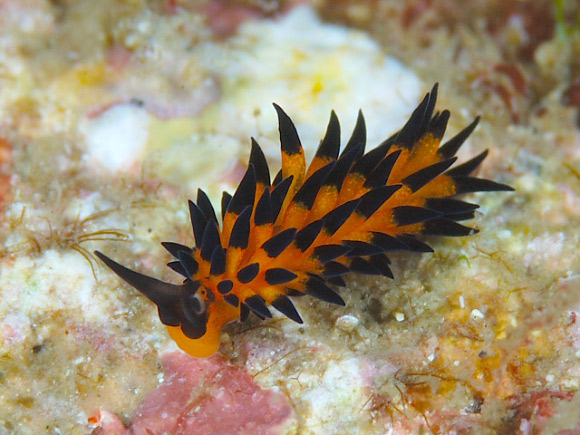A team of researchers led by California State University’s Professor Patrick Krug has discovered three cryptic new species of sea slugs, and named one of them after former U.S. President Barack Obama.
The three new species belong to an enigmatic group of sea slugs, known as Sacoglossa.
They were previously considered to be the same as a species known as Placida cremoniana from the Mediterranean.
Professor Krug and colleagues observed differences in DNA sequences, tooth shape, and patterns of white stripes on the heads of specimens, which distinguish them as four similar-looking species.
“Molecular species delimitation recovered Placida cremoniana as a complex of four genetically divergent species, further distinguished by consistent differences in head coloration and radular morphology,” the researcher said.
One of the new species, Placida brookae, may be native to the Galapagos. It is named for Brook Peterson, who is a professional dive instructor and underwater photographer.
“Placida brookae was discovered recently on Catalina Island, which is surprising because sea slugs along our shore have been well documented for decades,” Professor Krug said.
“We believe that recent ocean warming combined with El Niño conditions allowed it to expand its range into the L.A. area.”
The other two new species, named Placida kevinleei and Placida barackobamai, were found in Hawaii.
“Placida kevinleei is named for Kevin Lee, who is a scuba diver and underwater photographer,” the scientists said.
“Placida barackobamai is named after former President Barack Obama.”
“We wanted to recognize his dramatic expansion of the Papahānaumokuākea Marine National Monument in Hawaii, as well as his administration’s commitment to fighting global climate change,” Professor Krug added.
Research on the new species is published in the journal Marine Biodiversity.
_____
Jennifer B. McCarthy et al. Integrative systematics of Placida cremoniana (Trinchese, 1892) (Gastropoda, Heterobranchia, Sacoglossa) reveals multiple pseudocryptic species. Marine Biodiversity, published online October 30, 2017; doi: 10.1007/s12526-017-0812-2








